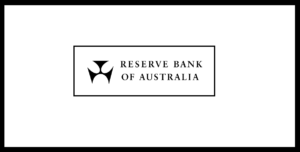RBA Cuts Cash Rate to 4.1%, But Hawkish Tone Signals Slow Path Ahead
The Reserve Bank of Australia (RBA) has cut the cash rate by 25 basis points to 4.1%, in line with expectations. Inflation has fallen faster than expected, with underlying inflation aligned with the 2-3% target for the second half of 2024. The RBA’s revised forecasts predict trimmed mean inflation of 2.7% by mid-2027. Despite the rate cut, the RBA remains cautious, warning against easing policy too quickly.
Tightness in the labor market remains a concern, and the RBA emphasized a gradual approach to future rate cuts. The central bank’s forecast includes higher public demand growth, but consumption is expected to be weaker. GDP growth is expected to return to trend, though slightly softer than previous forecasts. Unemployment is expected to stabilize at 4.2%. The RBA’s approach continues to be restrictive, signaling more patience ahead. Future rate cuts are possible, but the road to inflation control remains long.

RBA Cuts Cash Rate to 4.1%, But Hawkish Tone Signals Slow Path Ahead
The Reserve Bank of Australia (RBA) has reduced its cash rate by 25 basis points to 4.1%, in line with expectations. This rate cut comes as inflation has fallen more quickly than anticipated, with underlying inflation aligning with the RBA’s 2-3% target in the second half of 2024. The RBA’s revised forecasts suggest a trimmed mean inflation of 2.7% by mid-2027, indicating that inflation is on track to meet the target. Additionally, the RBA noted that inflation could be declining more rapidly than originally expected.
Despite the rate cut, the RBA maintained a hawkish stance, emphasizing that the policy remains restrictive. While inflation has made progress, the Reserve Bank of Australia warned against easing monetary policy too quickly, as this could cause disinflation to stall and lead inflation to settle above the target range. The RBA attributed this risk to continued tightness in the labor market, which has not eased as expected. The central bank also highlighted the need for caution in its approach to rate cuts, acknowledging that the labor market’s persistence could complicate efforts to achieve sustained inflation control.
The hawkish tone in the Reserve Bank of Australia’s statement can be partly attributed to recommendations from the 2023 Reserve Bank of Australia Review. The review called for a more explicit inflation target framework, emphasizing that policy should aim to return inflation to the midpoint of the target range. TheReserve Bank of Australia’s concerns about inflation were reinforced by revised unemployment forecasts, with expectations for unemployment to stabilize at 4.2%. However, the central bank refrained from setting a specific “full employment” benchmark, recognizing that factors like underemployment and vacancies also play a role in assessing the health of the labor market.
The Reserve Bank of Australia’s latest forecasts also reflect an upward revision in public demand growth, driven by recent state and federal budget updates. Conversely, consumption growth was revised down slightly, although it remains above consensus expectations. While GDP growth is expected to return to trend, the forecasts for potential output have softened slightly. The RBA also acknowledged the vulnerability of employment growth in certain sectors, such as healthcare and social assistance, which may be susceptible to shifts in the broader labor market.
The central bank’s cautious approach suggests that while further rate cuts may be on the horizon, the Reserve Bank of Australia is not committed to making swift moves. The Reserve Bank of Australia emphasized that inflation’s progress would need to continue before any decisions are made regarding future rate cuts. The bank’s stance remains one of gradual adjustment, with an acknowledgment that the road to inflation control is long and uncertain.
In summary, the Reserve Bank of Australia’s rate cut is a response to favorable inflation data, but the bank’s hawkish rhetoric signals caution. The central bank remains focused on ensuring that inflation sustainably returns to target while being mindful of risks in the labor market and the broader economy. Despite the rate cut, the RBA is taking a measured approach, with a focus on gradual adjustments and long-term inflation control.
Check out TimesWordle.com for all the latest news
You must be logged in to post a comment.